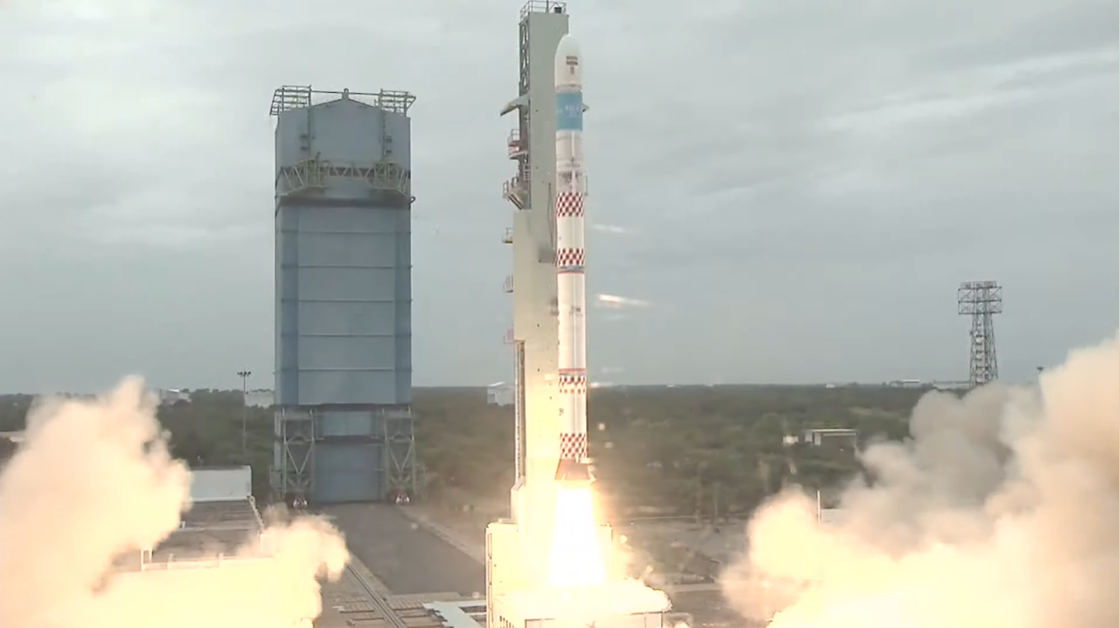SEOUL, South Korea — The Aug. 6 maiden flight of India’s newly developed Small Satellite Launch Vehicle (SSLV) went awry with “some data loss” that occurred in the terminal stage of the mission.
India’s space agency ISRO is analyzing data to know what happened and also checking the status of the two satellites deployed from the rocket.
In an unscheduled post-launch announcement, ISRO leader S. Somanath said all stages had performed as expected, but “some data loss” had occurred in the final phase of the flight. He didn’t give further details. In a separate announcement, ISRO said the rocket hit a problem “about 12 minutes into its flight,” which, based on the flight sequence announced before liftoff, could be somewhere between the satellite injection module’s ignition and the first satellite’s deployment.
The three-stage vehicle, capable of sending up to 500 kilograms of payload to 500-kilometer low Earth orbit, lifted off at 11:48 p.m. Eastern Aug. 6 from Satish Dhawan Space Centre’s launch pad No.1, carrying an ISRO-built 135-kilogram earth observation satellite EOS-02 and an 8-kilogram cubesat AzaadiSAT, made by Indian students.
Live footage showed the 34-meter rocket, decorated with India’s national flag, soaring into the air with bright yellow flames shooting out of its engines. While the rocket’s three stages used solid fuel, called hydroxyl-terminated polybutadiene, its satellite injection module, called Velocity Trimming Module (VTM), was powered by 0.05 tons of liquid fuel for the precise deployment of satellites.

Flight events seen on the live-streamed screen heralded that the rocket’s flight began smoothly. The first stage was separated about two minutes after liftoff as planned, and the second stage did so 3.5 minutes later. The third stage’s separation took place 10.7 minutes after liftoff. The last available data on the screen was that the injection module’s ignition began 10.8 minutes after liftoff and “cutoff” immediately after. At one point, the footage showed the EOS-02 satellite being deployed from the module. The deployment of the other satellite, AzaadiSAT, was confirmed a couple of hours later.
ISRO developed SSLV with the aim of providing cheaper and more flexible access to space, compared to its two operational vehicles, the Polar Satellite Launch Vehicle (PSLV) and the Geosynchronous Satellite Launch Vehicle (GSLV). To that end, SSLV was designed to be configured with a simple modular interface, and the vehicle’s assembly can be done horizontally and vertically. “We can do the assembly in three or four days and launch in seven days,” The Times of India quoted a director of Satish Dhawan Space Centre as saying.
